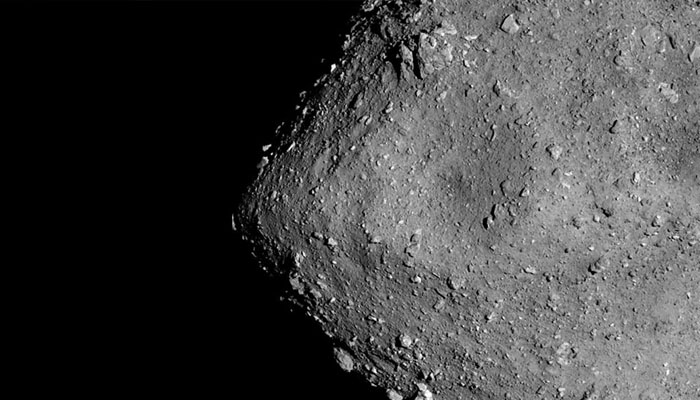Organic matter found on asteroid Ryugu may be seeds of life on Earth — but how?
Ryugu is near-Earth asteroid which may have formed initial stages of life on this planet
January 29, 2024

Extensive analysis of samples from the asteroid Ryugu has shown more proof that the organic compounds that formed the basis of life on Earth were carried here by extinct comets.
In 2018, Japan's Hayabusa2 mission reached the space rock Ryugu, which resembles a spinning top. It brought back these samples of space rock. The asteroid's surface material, which Hayabusa2 collected and studied over the course of nearly eighteen months, has turned out to be a wealth of knowledge about planet Earth, according to Live Science.
Ryugu, formerly known as 162173 Ryugu, is a near-Earth asteroid that is 2850 feet (870 metres) broad and does not have an atmosphere to protect it. This implies that when an asteroid is impacted, the interplanetary dust it collects can alter the asteroid's surface composition because it is immediately exposed to space.
Researchers looking for the first signs of life on Earth discovered "melt splashes" that ranged in width from 5 to 20 micrometres. These splashes were caused by cometary dust, specifically, striking Ryugu's surface. Additionally, the researchers discovered tiny carbonaceous elements within these melt droplets that resembled early organic stuff.
"This organic matter might be the small seeds of life once delivered from space to Earth," team member and Tohoku University Graduate School of Science assistant professor Megumi Matsumoto said in a statement.
Comets spend most of their lives in the chilly outer reaches of the solar system because they often have large orbits around the sun. However, solar radiation heats their interior, frozen material when they do reach the inner solar system. This results in the substance sublimating—a process that turns it directly into a gas.
Some of the surface material of the comet is carried away when this gaseous stuff erupts off it. This not only gives comets their distinctive tails and auras, or "comas," but it also circles the sun with cometary dust trails. As the dust particles burn up in the Earth's atmosphere, we see meteor shows when Earth travels through these tracks.









